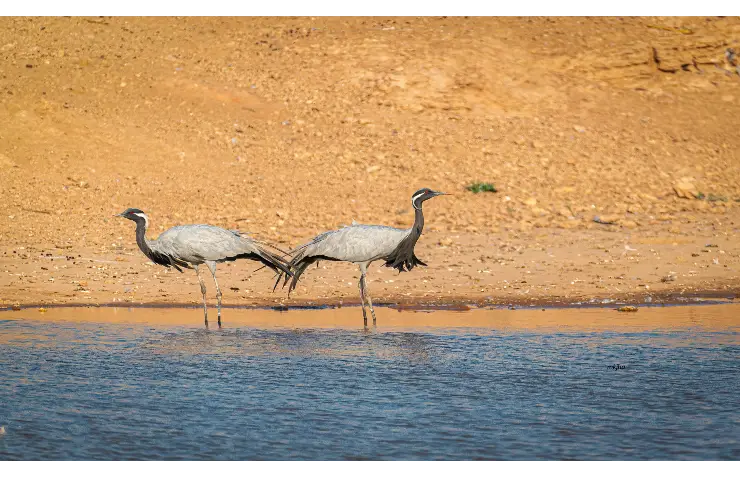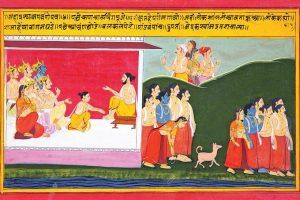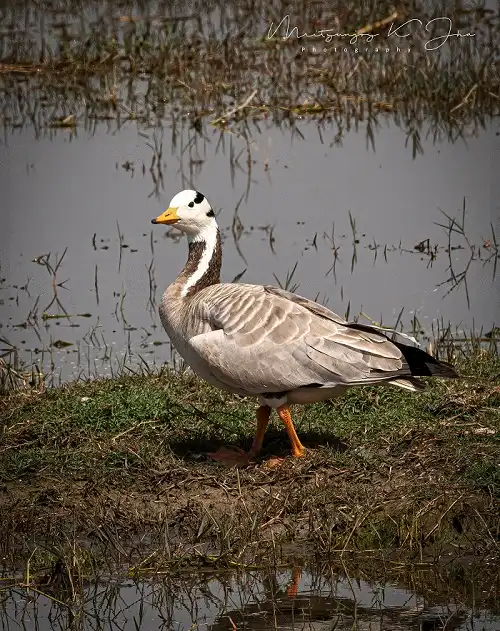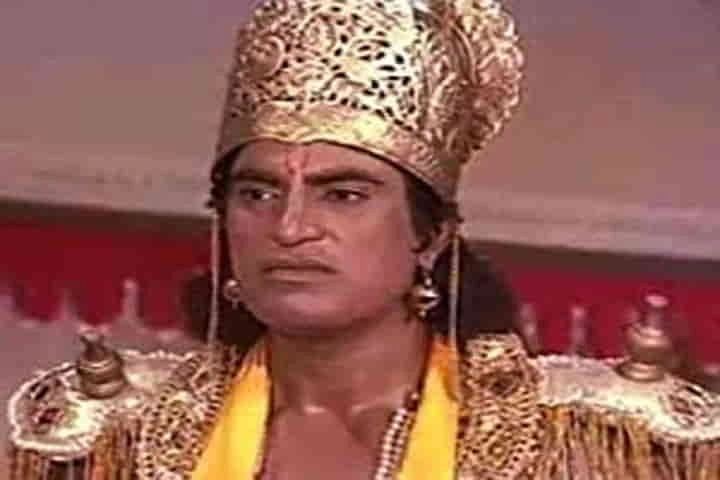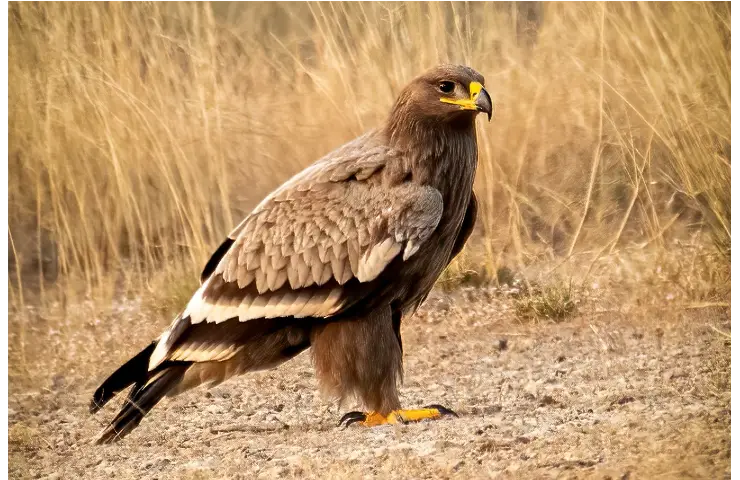Come winter and the sleepy small village of Rajasthan Keechan is abuzz with the full-throated sound of thousands of visitors – Demoiselle Cranes. Locally, they are known as “Kunj” or “Krunj”. These avian visitors have arrived from Siberia and Mongolia to this village in the Thar desert of Rajasthan, covering about 5,000 kilometers flying across many international frontiers and soaring over the Himalaya.
“This has been an annual ritual since ancient times. Though it has hit the headlines in recent times but these “Kunj” have been a part of our legends,” says one of the village elders.

And he is right. According to the epic Mahabharat, during the battle of Kurukhetra, the Pandavas used the formation of the “Krauncharuma Vyuha” against the Kauravas. The Sanskrit word “Kraunch” means crane while “Vyuha” means plan or strategy. According to Mahabharat, on the second day of the 18 day long battle, the Pandavas used the Krauncharuma Vyuha a formation inspired by the V-shape of cranes in flight and when an army employs this, the most agile warriors are placed at the beak, the eyes and the wings. The person that is meant to be kept safe – the king – is hidden away in the belly of the crane, with a number of supporting warriors all around him.
Watch Video : V-Formation of Demoiselle Cranes
On Day 2, Arjuna was in the lead at the crane’s outstretched beak so that he was the first person that the Kauravas saw on the battlefield. Right behind him, making up the head of the bird, was Drupada with a division of Panchala forces. Dhrishtadyumna takes the right wing while Nakula and Sahadeva are entrusted with manning the left wing. The formation of the army phalanxes in this manner was a very formidable V formation to induce fear in the army of Kaurvas. According to the epic, to counter, the Kaurvas too counterattacked with The Krauncha Vyuha on the 6th day of battle.
Even in Valmiki Ramayan, it is said that Valmiki composed the first verse ever in literature, after the sadness he felt on seeing a hunter kill a pair of mating”Krunj” Cranes
We don't know whether “Krunj” cranes ever existed in India or they used to migrate from other parts of the world but it is certain that they follow rock-solid army discipline.

![]()
In Keechan, we saw thousands of Demoiselle cranes descending at “chugga ghar” to feed in an orderly manner. We watch in awe as huge flocks of crane fly over from the nearby sand-dunes .First the ones that are close to the enclosure, and then the ones that have lined up all the way up to the dunes. But the discipline they show has to be seen to be believed. Though there would be thousands of them on any given day, at any given point in time there won’t be more than about 500 of them inside the enclosure of “chugga ghar”. Their departure from the Chugga Ghar ( feeding ground) is like a military drill. Before taking off, each group of cranes arrange itself in a queue, the flock follows the leader in a pattern before flying in a V-shape formation.
“Krunj” or Demoiselle cranes are the smallest of crane species in the world and possibly the grittiest. Filmed flying over Mount Everest by BBC, Demoiselle cranes brave journey of around 5000 Km’s in approximately 12 days through most grueling air turbulence, surviving the talons of seasoned predators like Himalayan golden eagles to reach here.
“It is believed, Mt Everest is so high, no bird can fly above it. But each year over these demoiselle cranes set out on the most challenging migrations on earth”. In Final ascent every wing beat becomes an exhausting struggle. At last they are over the highest barrier that lies in their way,” says Richard Attenborough in his documentary.

When we told the villagers of Keechan that their guests come all the way from Siberia, Mongolia and Eurasia, they said, “ it doesn’t matter where they are coming from, and where they are going. What matters to us is that they have entered our lives, and they are here to stay.”
Kheechan attracts travellers, ornithologists, birdwatchers, and wildlife photographers. Many of these cranes have been geo-tagged by researchers in Mongolia in an effort to study their migration patterns. “If you look closely you might be able to see bands around some of the crane’s legs,” says Sevaram, the caretaker of “chugga ghar.”
Demoiselle cranes were christened by the infamous queen Marie Antoinette after the French word for damsel. They might look delicate, but the birds are by no means fragile and they have proved it.
Also Read: Did a monitor lizard help Shivaji conquer Sinhagad Fort: Legend says yes!






